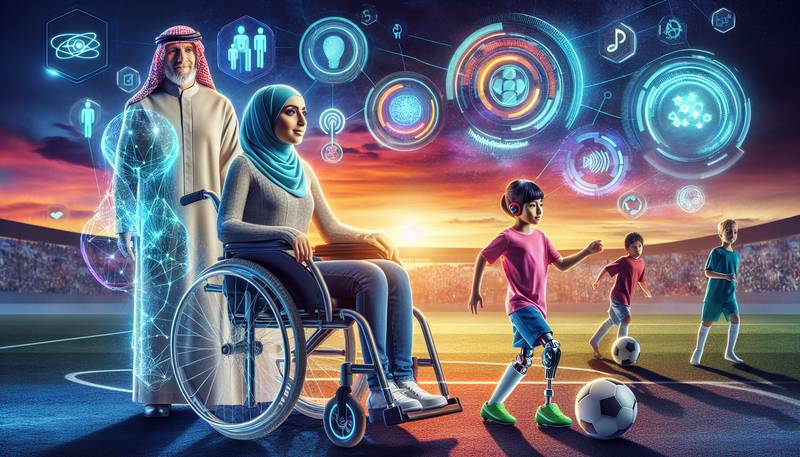Tech for Accessibility: Making the World More Inclusive

As our world becomes more connected through technology, it's essential to ensure that everyone has access to the same opportunities. That's where tech for accessibility comes in. By leveraging advancements in technology, we can make the world a more inclusive place for people with disabilities.
The current state of accessibility
According to the World Health Organization, over 1 billion people globally live with some form of disability. These individuals often face barriers to accessing technology, which can limit their ability to participate in society fully. For example, someone with a visual impairment may struggle to use a smartphone without a screen reader, while someone with a hearing impairment may not be able to enjoy video content without captions.
The role of technology in improving accessibility
Thankfully, technology has the power to break down these barriers and provide equal access for all. Innovations such as voice recognition software, screen readers, and assistive devices have revolutionized the way people with disabilities interact with the world around them. These tools have made it possible for individuals to work, learn, and communicate in ways that were once unimaginable.
Examples of tech for accessibility
One of the most well-known examples of tech for accessibility is the screen reader. These software programs allow people with visual impairments to hear what is on the screen, making it possible for them to use computers, smartphones, and other devices independently. Voice recognition software has also been a game-changer, enabling people with mobility impairments to control their devices using only their voices.
Another exciting development is the rise of assistive devices. These are specialized tools designed to help people with disabilities perform everyday tasks more easily. For instance, there are now wearable devices that can translate sign language into spoken language in real-time, opening up communication for people who are deaf or hard of hearing.
The impact of tech for accessibility
The impact of these technologies cannot be overstated. By making it possible for people with disabilities to access information and communicate more easily, tech for accessibility has increased their independence and self-reliance. It has also made it easier for them to participate in the workforce, pursue education, and engage in social activities.
The future of accessibility technology
As technology continues to evolve, so too will the tools available for accessibility. Researchers and developers are constantly exploring new ways to improve the lives of people with disabilities. For example, there is ongoing research into the development of brain-computer interfaces that could allow individuals with severe mobility impairments to control devices using only their thoughts.
The importance of inclusive design
Inclusive design is crucial for the future of tech for accessibility. This approach involves designing products and services to be usable by as many people as possible, regardless of their abilities. By considering accessibility from the start, developers can create technology that is inherently inclusive, rather than trying to retrofit it later on.
Making accessibility a priority
For tech for accessibility to truly make a difference, it must be a priority for everyone involved in the development and distribution of technology. This includes companies, governments, and organizations. By working together, we can ensure that technology is accessible to all, and that everyone has an equal opportunity to participate in our increasingly digital world.
How we can all play a part
It's not just up to the tech industry to make the world more inclusive. We can all play a part in ensuring that technology is accessible to everyone. This can include advocating for accessibility features in the products and services we use, supporting organizations that work in this area, and educating ourselves about the needs of people with disabilities.
Conclusion
Tech for accessibility has the power to change lives, and it's up to all of us to make sure that it's a priority. By working together, we can create a more inclusive world where everyone has an equal opportunity to thrive. So let's embrace the potential of technology to make a positive impact and ensure that no one is left behind.


